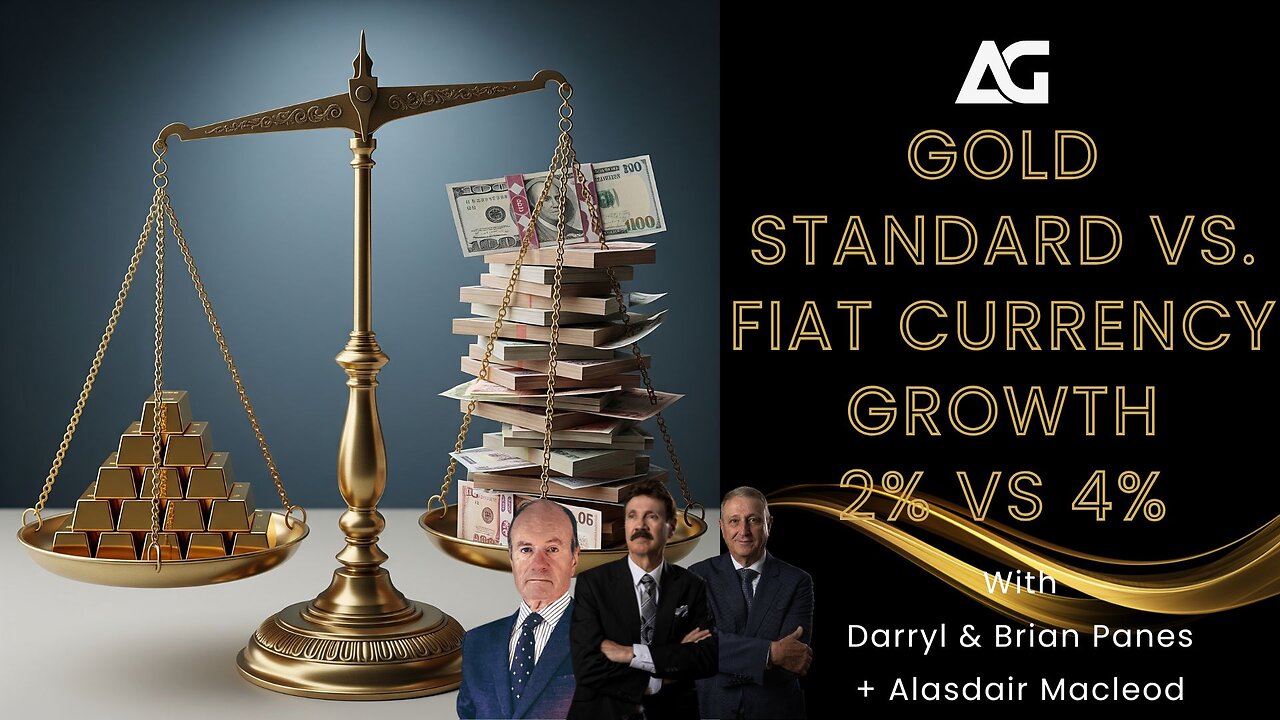Premium Only Content

Gold Standard vs. Fiat Currency: Is 2% Growth Better Than 4%?
We're constantly told that higher economic growth is the ultimate goal. But is a 3-4% growth rate under a fiat currency system really better than a slower, more stable 2% growth backed by physical gold? In this video, we dive deep into one of the most fundamental debates in economics.
Under a gold standard, the growth of the money supply is limited by the rate of gold mining (around 1.5%) plus productivity gains, totaling about 2% annual growth. By contrast, modern fiat systems can create money at will, often leading to higher nominal growth rates of 3-4% or more.
On the surface, 4% beats 2%. But is it that simple? Join us as we explore:
🔹 The Nature of Growth: What's the real difference between growth generated by production (gold standard) versus growth stimulated by credit and money creation (fiat)?
🔹 Inflation's Hidden Tax: Does the higher growth in a fiat system come at the cost of your purchasing power? We break down how inflation impacts long-term wealth.
🔹 Stability vs. Flexibility: We analyze the trade-offs between gold's price stability and fiat's flexibility for governments and central banks to manage economic crises.
🔹 The Historical Argument: Why did we abandon the gold standard, and what have the consequences been?
Is the pursuit of higher growth numbers blinding us to the long-term risks of currency debasement and boom-bust cycles? Or is the gold standard an outdated relic that would stifle a modern global economy?
Let us know your thoughts in the comments below! Which system do you believe is better for long-term prosperity?
🔔 SUBSCRIBE for more deep dives into economics, finance, and the future of money. Don't forget to hit the like button if you found this video valuable!
Connect with Alasdair Macleod:
https://x.com/MacleodFinance
https://substack.com/@macleodfinance
@AsGoodAsGoldAustralia
-
 4:17
4:17
As Good As Gold Australia
3 months agoAlasdair Macleod: Gold's "Holding Pattern" is The Calm Before The Storm
251 -
 LIVE
LIVE
SpartakusLIVE
5 hours agoTrios w/ The BOYS on WZ and then we're teaching Jean ARC RAIDERS
1,222 watching -
 2:55:52
2:55:52
SOLTEKGG
3 hours agoLIVE - NOT LOSING A MATCH - NEW PC - !pc
16.8K2 -
 LIVE
LIVE
ThatStarWarsGirl
3 hours agoTSWG LIVE: Stargate Is BACK! EFAPing Michael Shanks Interview with GUEST!!!
258 watching -
 LIVE
LIVE
MissesMaam
4 hours agoStardew Co-Op 💚✨
97 watching -
 1:32:46
1:32:46
Glenn Greenwald
6 hours agoHillary Blames TikTok for Anti-Israel Sentiment; MAGA Sycophants Gain Pentagon Press Access; Who Should Win Anti-Semite of the Year? See the Top 10 Finalists | SYSTEM UPDATE #552
109K89 -
 56:12
56:12
Flyover Conservatives
22 hours ago100% Chance the Grid Fails: Why No One Is Fixing It (and How Easy It Is) - Tommy Waller | FOC Show
19K5 -
 LIVE
LIVE
JDubGameN
4 hours agoStarlink Network Test Stream! | Road to 100 Followers
322 watching -
 2:17:31
2:17:31
The Daily Signal
7 hours ago $5.22 earned🚨BREAKING: Tennessee Congressional Election Results, Minneapolis Police to "Intervene" Against ICE,
24.8K6 -
 1:52:47
1:52:47
megimu32
3 hours agoON THE SUBJECT: Christmas Vacation Is UNTOUCHABLE!
14.8K4